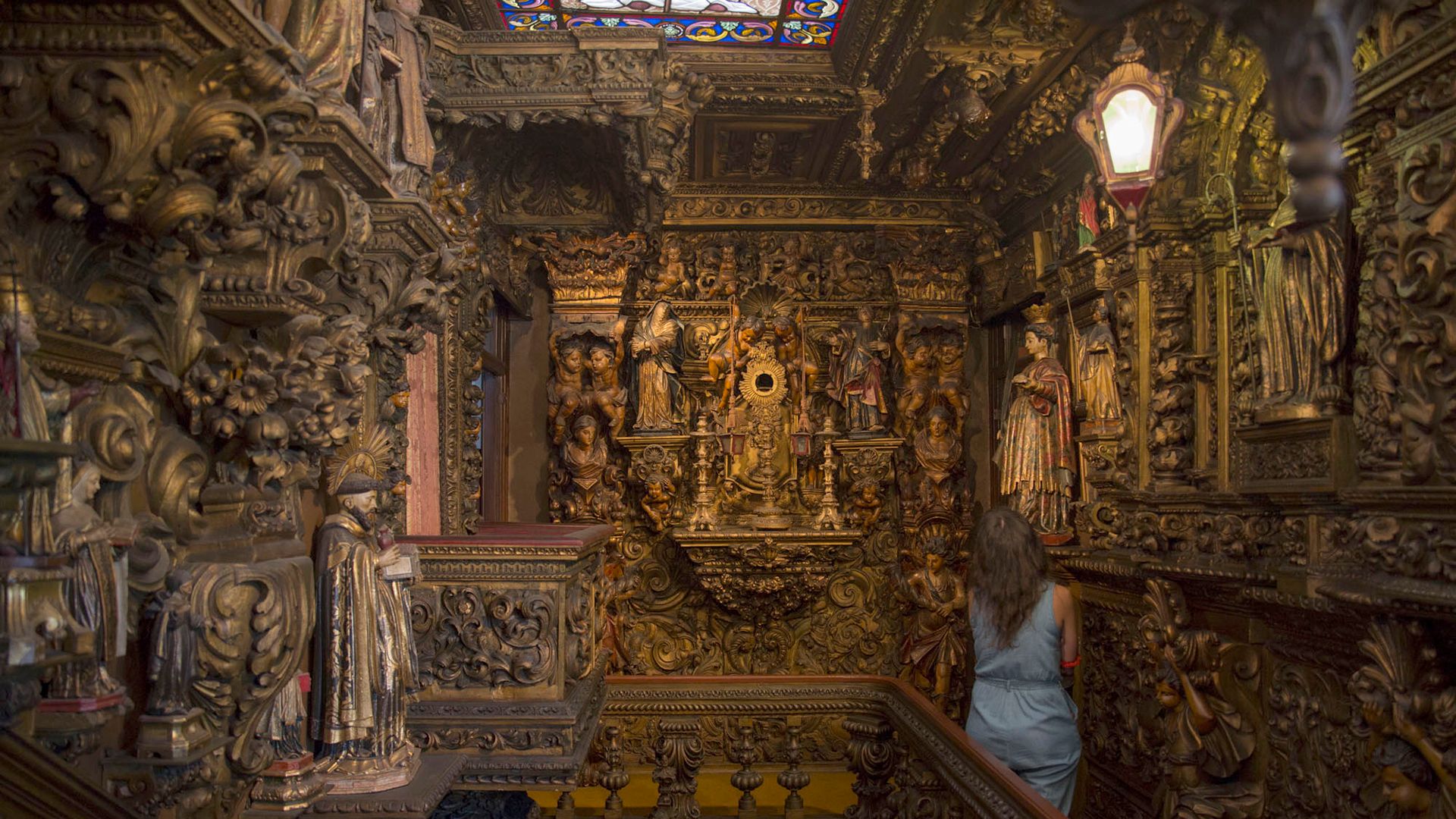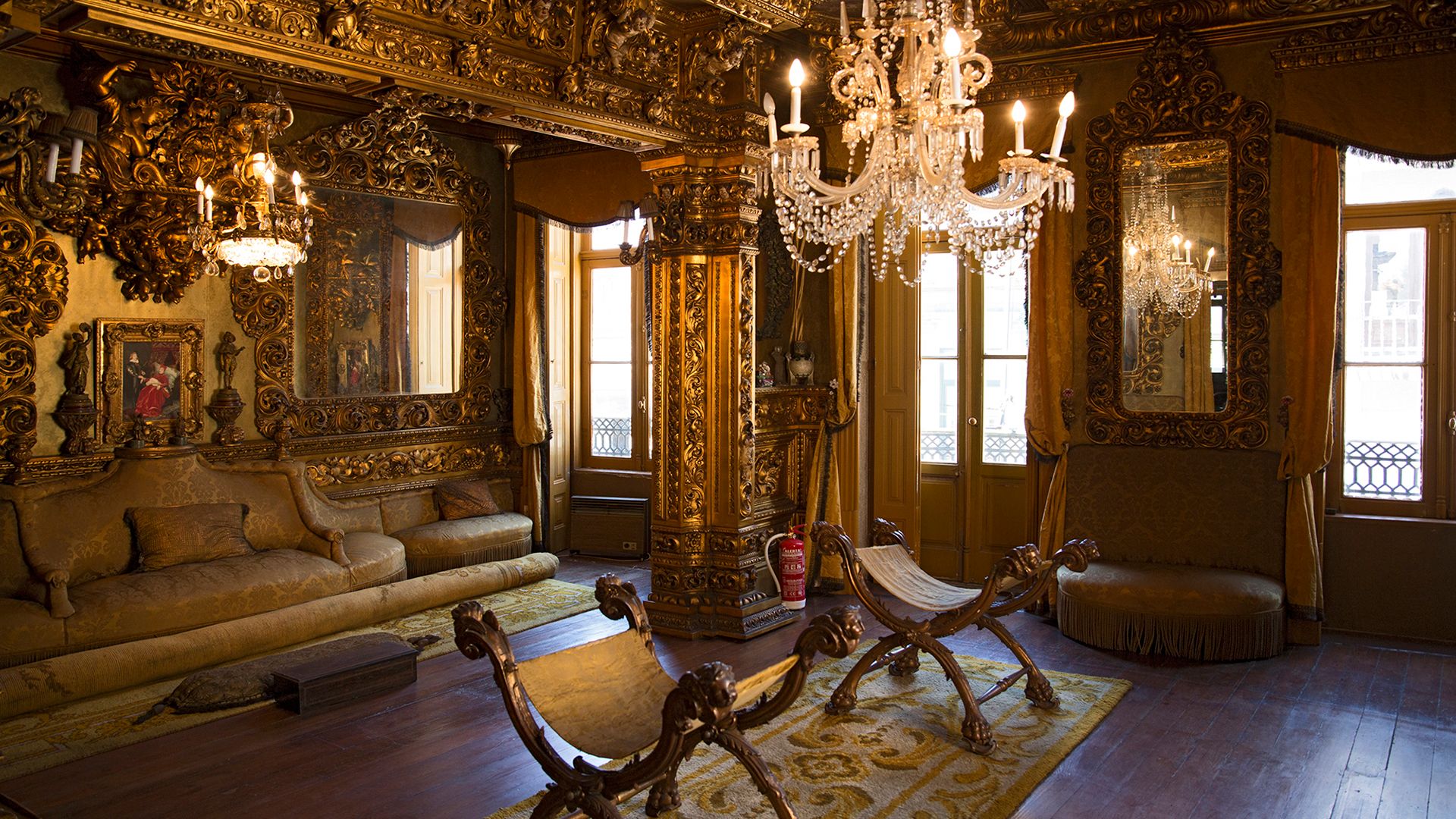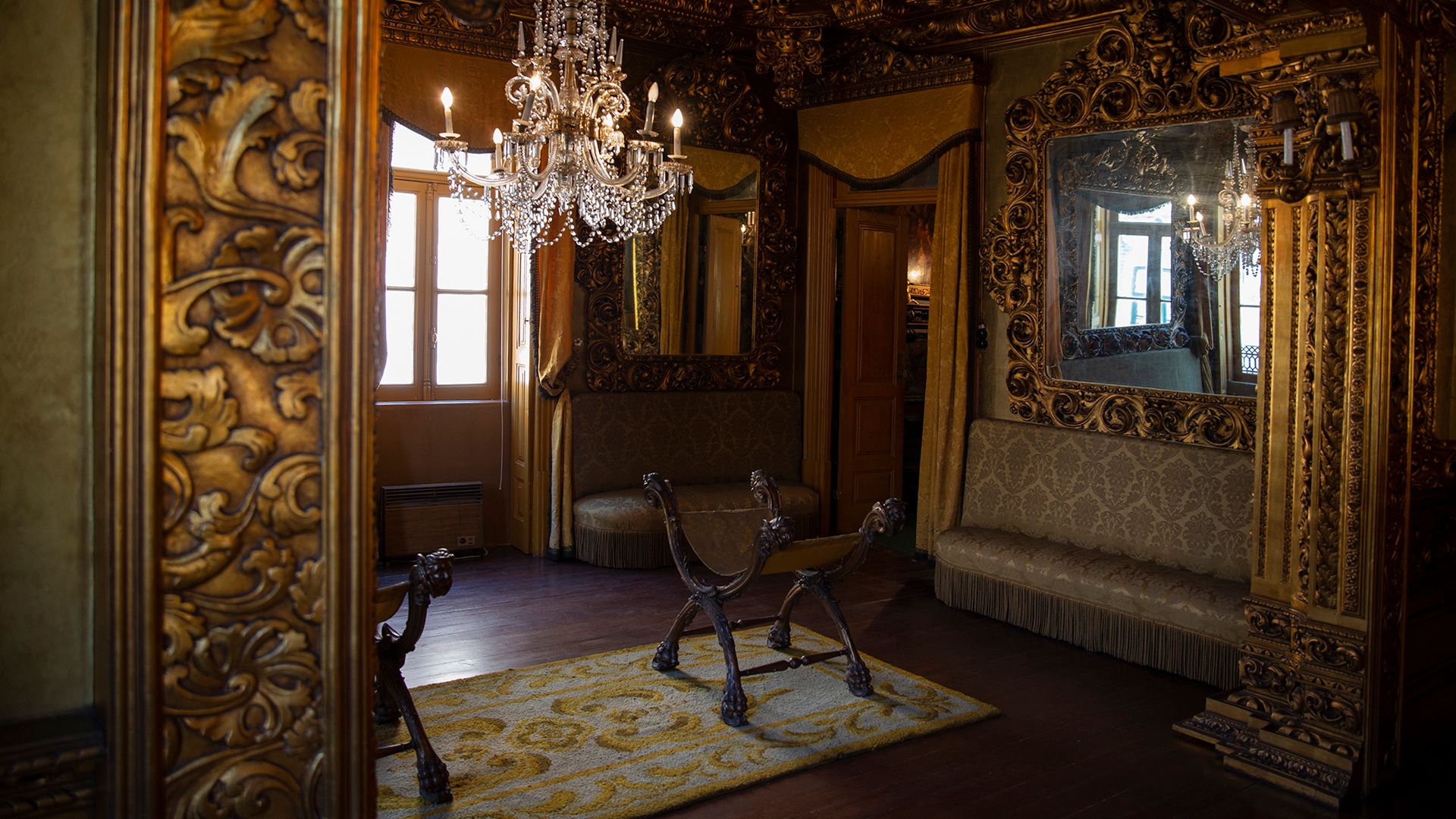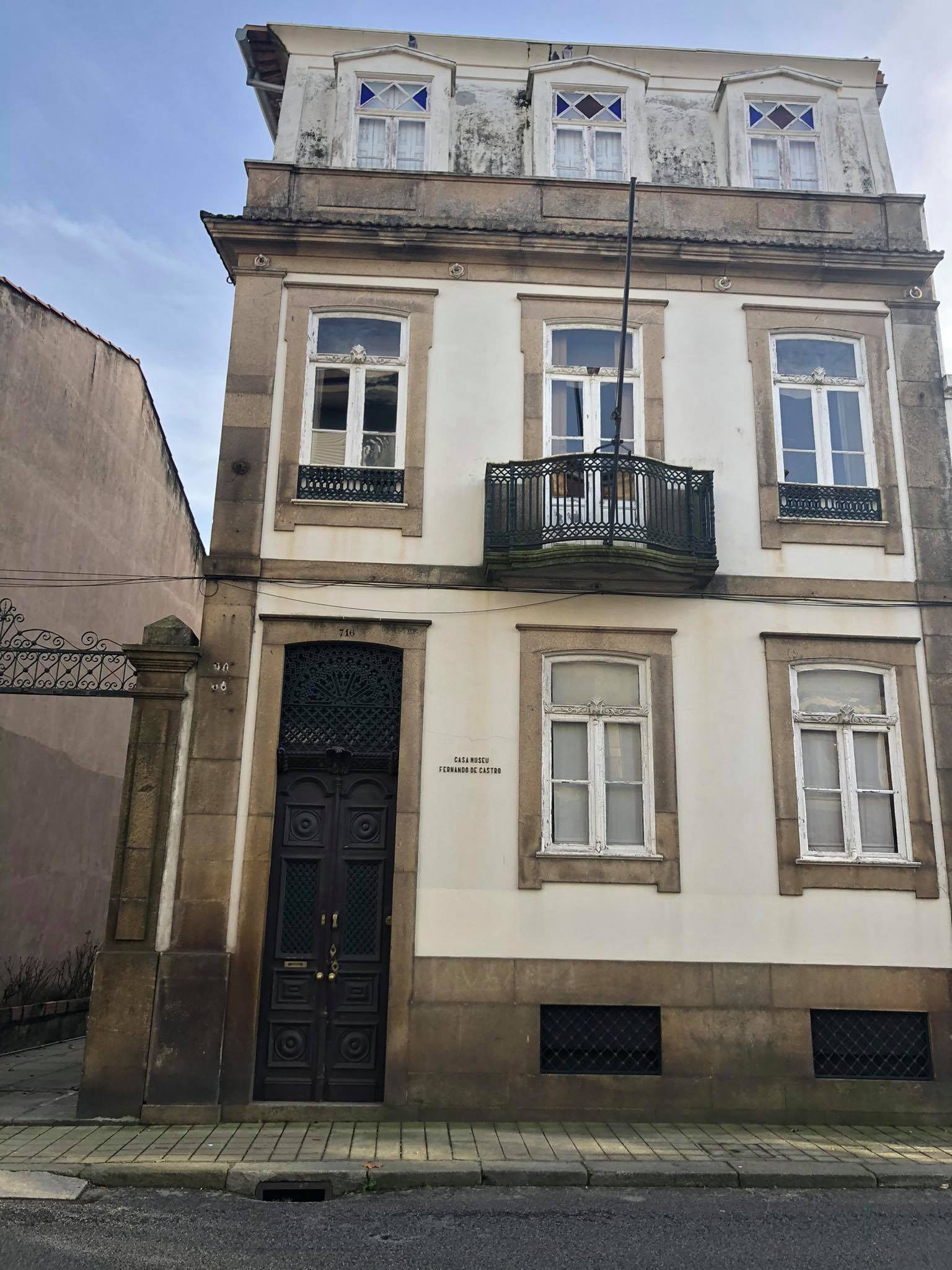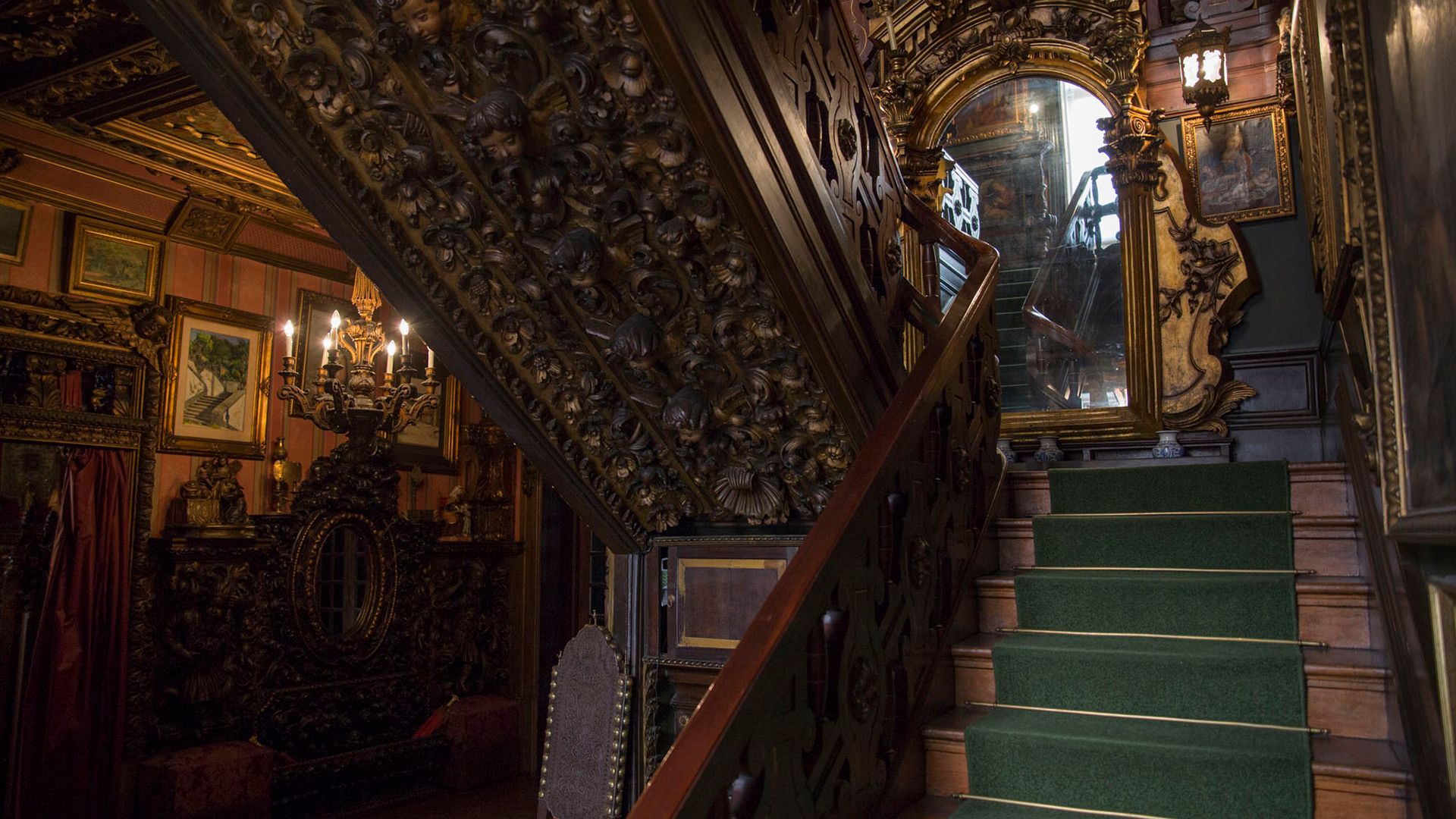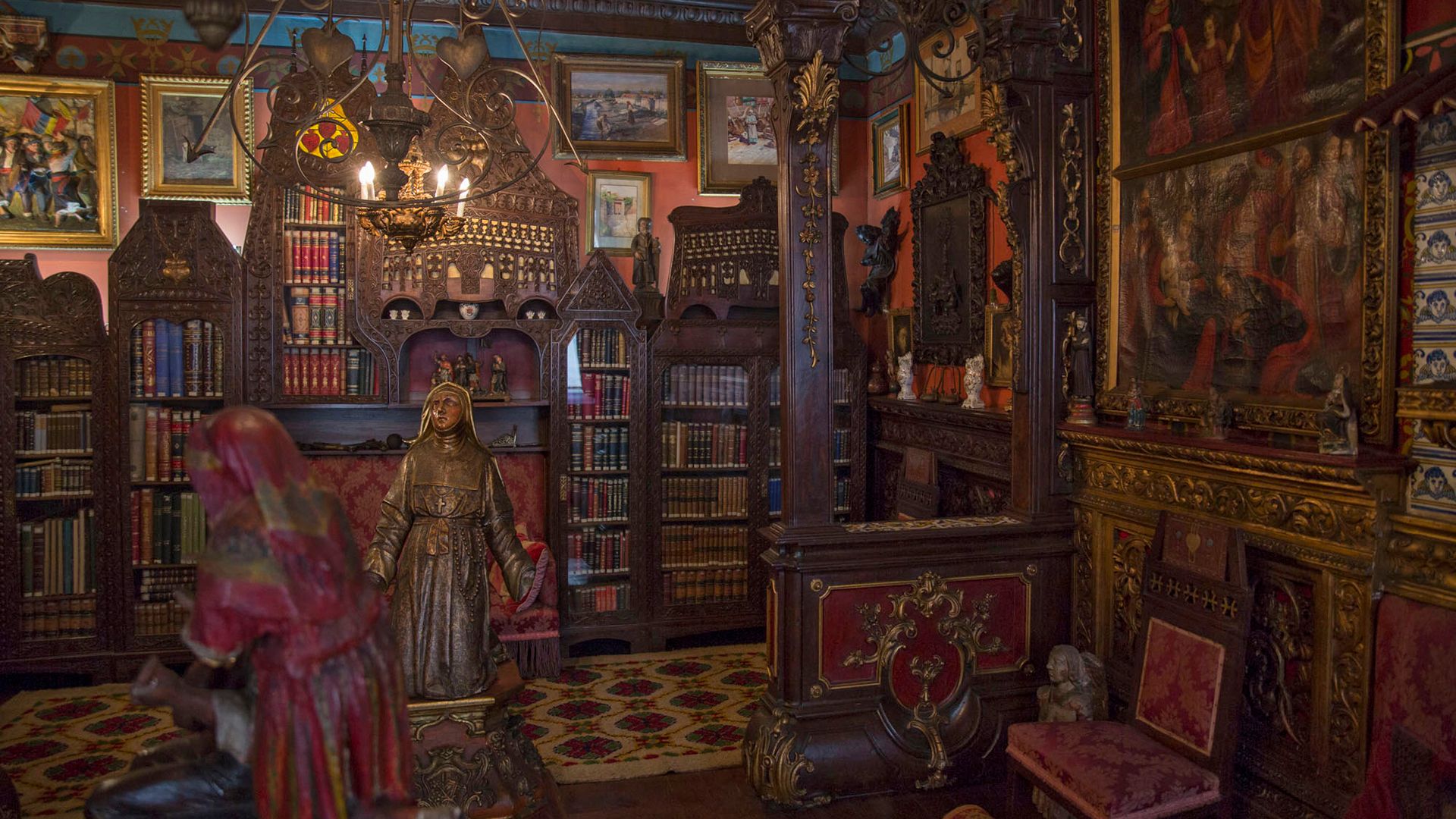The Fernando de Castro House-Museum was the residence of a family of collectors of painting, sculpture and decorative arts. It fell on the last heiress, Maria da Luz de Araújo Castro, to donate the property and contents to the State, posthumously fulfilling the desire of her brother, Fernando de Castro, to establish a public museum. Through a December 15, 1951 decree, it was classified and attached to the Soares dos Reis National Museum.
The House-Museum's interior decoration has a distinct revivalist ambiance, with intricate carvings and religious art dominating the space. This imparts an antiquarian spirit to the surroundings that is in line with the late nineteenth-century trend of revering national styles and antiques. It is therefore one of the rare environments of late romanticism in the city of Porto.
Recent studies indicate that the fixed decoration of the house corresponds to the time of its construction, between 1893 and 1908, including carved wood wainscot, of modern or restored manufacture, coffered ceilings, mirrors, furniture, wallpapers, chandeliers and lanterns. This original cladding appears to be a result of an interior design that was created with ostentation and followed updated taste by the house's founder, Fernando António de Castro. It is worth mentioning that this businessman from Rua das Flores came from an educated environment, the son of a notary and a member of the Campos Melo family who prospered in the woolwork business in Covilhã.
This entrepreneur lived in the parish of Sé and decided to move to the Antas neighbourhood in 1893. This is the date of approval of the house he had built with two floors on the rua de Costa Cabral which was expanded in 1908, including a kitchen next to the dining room on the first floor and the building of a third floor to accommodate four bedrooms and two rooms. After his death, family issues led to the concealment of all documents relating to the inheritance, transferred in 1918 to his two children, Maria da Luz and Fernando de Castro, the heir of the house.
The Fernando de Castro House-Museum collection consists of different collections gathered over several decades. It includes mainly religious art items with erudite and popular representations, Portuguese naturalist painting and decorative arts. Also noteworthy is an interesting nucleus of caricatures and some books by Fernando de Castro, a collector, artist and poet. The arrangement of objects in the rooms remains true to the arrangement at the time of his sister, Maria da Luz.
